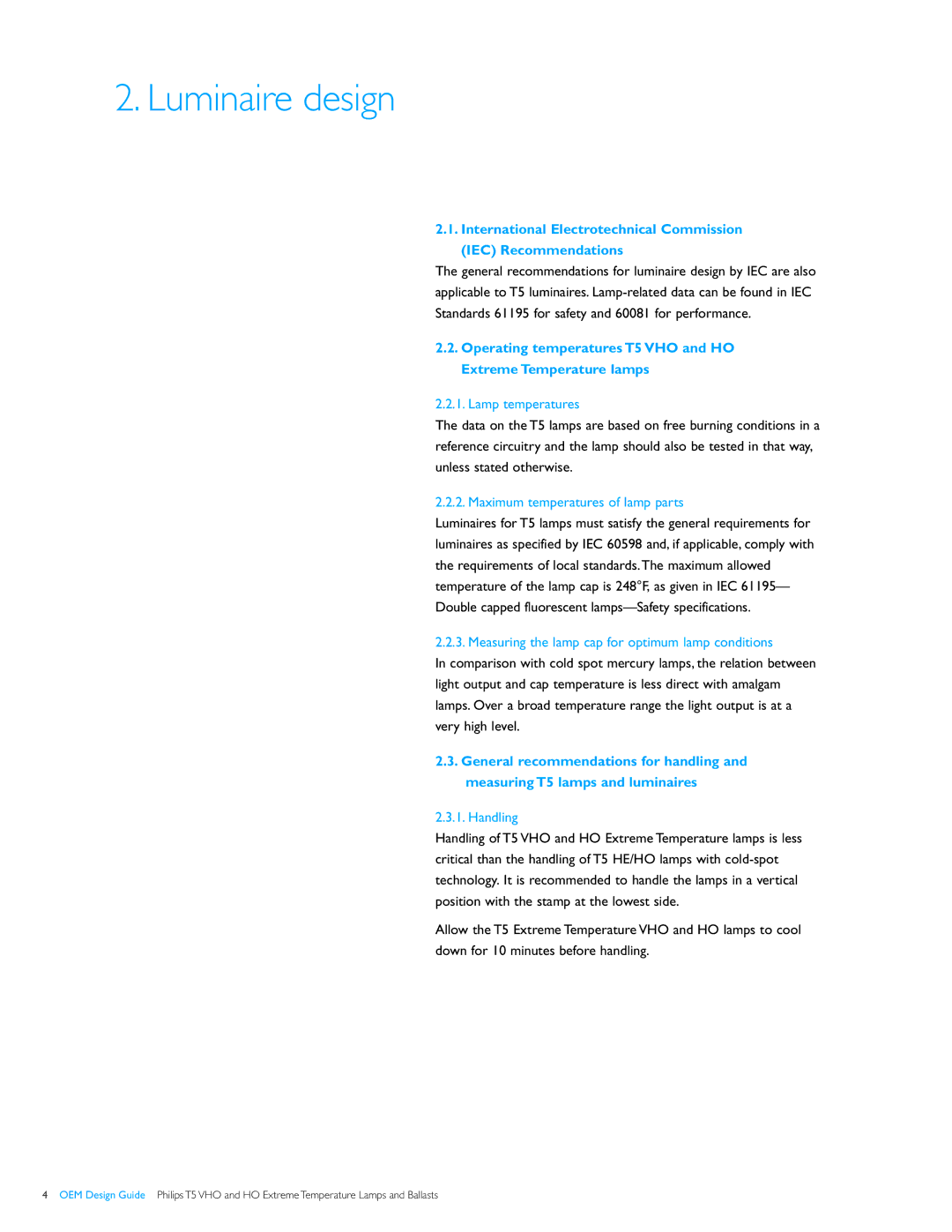2. Luminaire design
2.1.International Electrotechnical Commission (IEC) Recommendations
The general recommendations for luminaire design by IEC are also applicable to T5 luminaires.
2.2.Operating temperatures T5 VHO and HO Extreme Temperature lamps
2.2.1. Lamp temperatures
The data on the T5 lamps are based on free burning conditions in a reference circuitry and the lamp should also be tested in that way, unless stated otherwise.
2.2.2. Maximum temperatures of lamp parts
Luminaires for T5 lamps must satisfy the general requirements for luminaires as specified by IEC 60598 and, if applicable, comply with the requirements of local standards.The maximum allowed temperature of the lamp cap is 248°F, as given in IEC 61195— Double capped fluorescent
2.2.3. Measuring the lamp cap for optimum lamp conditions
In comparison with cold spot mercury lamps, the relation between light output and cap temperature is less direct with amalgam lamps. Over a broad temperature range the light output is at a very high level.
2.3.General recommendations for handling and measuring T5 lamps and luminaires
2.3.1. Handling
Handling of T5 VHO and HO Extreme Temperature lamps is less critical than the handling of T5 HE/HO lamps with
Allow the T5 Extreme Temperature VHO and HO lamps to cool down for 10 minutes before handling.
4 OEM Design Guide Philips T5 VHO and HO Extreme Temperature Lamps and Ballasts
